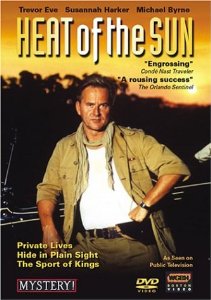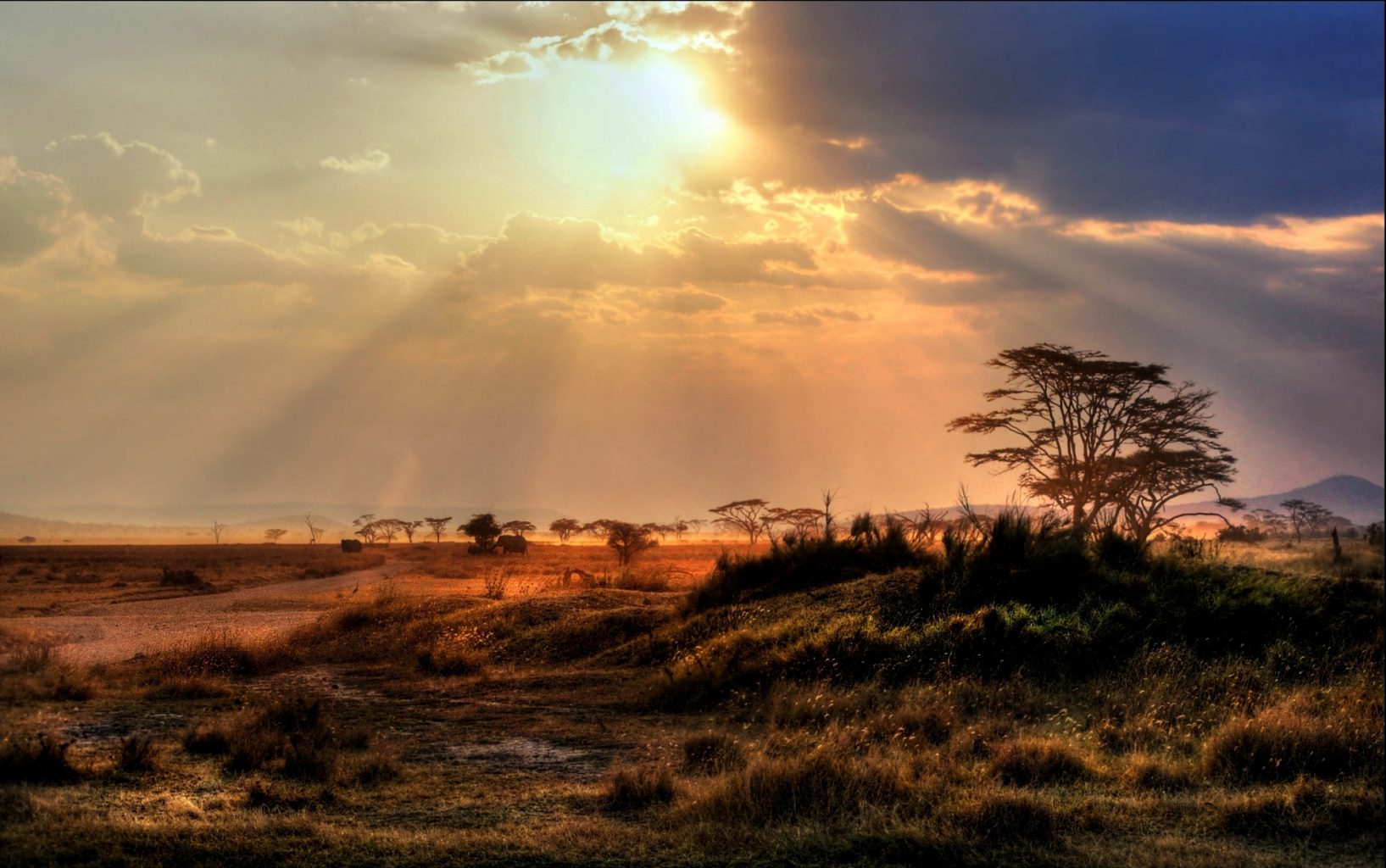
In the meantime, there are certain stories I return to when I don’t feel like watching or reading anything else, stories that make me smile involuntarily with the opening notes of the theme or first words of the prologue. Stories I Love. And I want to share them, because sharing stories is what it’s all about. So let’s consider this a semi-regular feature.
To set the stage for our first installment, turn off your air conditioning.
The place is Nairobi, the year 1931. Scotland Yard Superintendent Albert Tyburn (Trevor Eve, of BBC’s Waking the Dead) has been exiled to an African backwater for his conduct in a previous investigation. (We witness the requisite dark backstory for our hero in the opening scenes.)
The day he arrives, Tyburn is assured that the worst he will have to deal with is parking tickets and a condescending, overbearing superior. (Burkitt is deliciously played by Michael Byrne, with hints of his Indiana Jones Nazi villain; every time he opens his mouth we add another adjective: racist, misogynistic, anti-Semitic….) And oh yes, there is a missing woman—probably nothing to worry about. Except of course the missing woman is found dead, within 24 hours of Tyburn’s arrival, and the body count continues to rise. Welcome to Heat of the Sun.

1) Start in the middle. Not necessarily with things blowing up or someone being murdered, but with a building tension or expectation that things are going to happen. The backstory I mentioned feels like prologue. The story really begins as the theme and opening credits roll, and we arrive in Nairobi on a train with Tyburn. We join our protagonist in the middle of a huge life change. Change is good (as long as it’s happening to our characters). How comfortable is he in the crowds on the platform? How does he deal with a young pickpocket? With a taxi driver? All of these things tell us about his character, but other seeds are planted there, too. Elements of everything that will happen in the next two hours are foreshadowed in those first ten minutes. The burned buildings he passes, the bright yellow airplane flying overhead, and <ahem> other details crucial to our hero solving the case pass by our eyes.
2) The protagonist is an outsider. He notices things the people who live there no longer see. And because he’s an outsider, people can explain things to him (and to the viewers) that would otherwise seem forced or artificial. They’re usually doing this, not to be helpful, but to remind him that he doesn’t belong. Of course, there are levels of Outsider-ness too, each with its own unique opportunity to observe. The female lead, a Beryl Markham-esque aviatrix, grew up in Kenya but isn’t part of the society scene. (Emma Fitzgerald is ably played by Susannah Harker, aka Jane from the bestest version of Pride & Prejudice ever.)
3) All of the characters are fully formed people. After three episodes, I felt as if I knew what motivated every character. One technique was concise, understated dialogue reminiscent of film noir. Emma Fitzgerald learned when she was fourteen that her father thought she was not his child, and he didn’t support her financially. Tyburn asks how she dealt with this. Her response could come from Lauren Bacall’s Slim, “At fifteen, I learnt poker.”
Another technique—skillful editing and acting that show us without telling. The freshly arrived Tyburn steps from his cab directly into an altercation at the local club. This scene, interacting with a beleaguered servant and drunk ex-pats, does at least triple duty. It demonstrates A) the prevailing values of the society we’ve entered, B) that Tyburn does not share those values, and C) that Tyburn acts in accordance with his beliefs, damn the consequences. (Echoes of his backstory.) The ensuing kerfuffle is relatively short, but one of my favorite fight scenes ever. His fighting style isn’t exactly a Cambridge boxing match either, which goes back to C, or maybe on to D) Tyburn isn’t about appearances; the man just gets his shit done.

The setting isn’t just a pretty backdrop. Setting helps determine action. For example, scale and remoteness play a role in every episode, and the aviatrix becomes enmeshed in Tyburn’s investigations because he needs her to schlep him around. Characters act the way they act because they’re acting within the framework of their time and place, their culture. At the most fundamental level, to solve the murders Tyburn must answer the question: what would a person in this place at this time (i. e. among the hedonistic “Happy Valley” set) commit murder to hide? It’s the kind of question we need to remember in our own writing.

Hi Judy
If your book (which I just got as a freebie – thanks) is anything like your blogs I am going to love it, and might just be tempted to give it 5 stars. 🙂
I have had GOT3 sitting in my recorder ever since the first episode – also not sure I can face it, even though S4 has been and gone. Only so much incest, rape, torture and dire dastardliness I can cope with in a year. I think GOT 1 & 2 exhausted my natural resilience. Have a listen to this v. interesting interview with G.R.R. Martin :
http://www.abc.net.au/local/stories/2013/11/08/3887040.htm?site=conversations
Those nearly always brilliant and interesting Conversations are the source of endless hours of enjoyment for me because I, too, live in a backwater with zero (ZERO) radio. Happily satellite internet works.
Take care!
Robin
Thanks, Robin, for the positive feedback, and I hope you enjoy my book. Thanks also for the heads-up on the Conversations–I’ll have to check it out. Hopefully they do podcasts as well as streaming. Even with satellite (a relatively recent addition, and I’m still so appreciative that I hear angelic choirs when I switch on the blue light) my internet can be a little dicey, so downloadable podcasts are definitely my friend. 😉